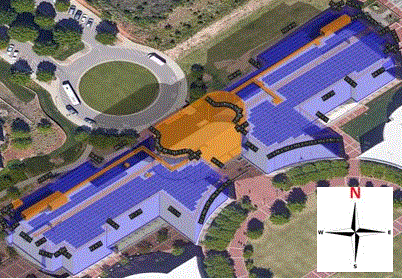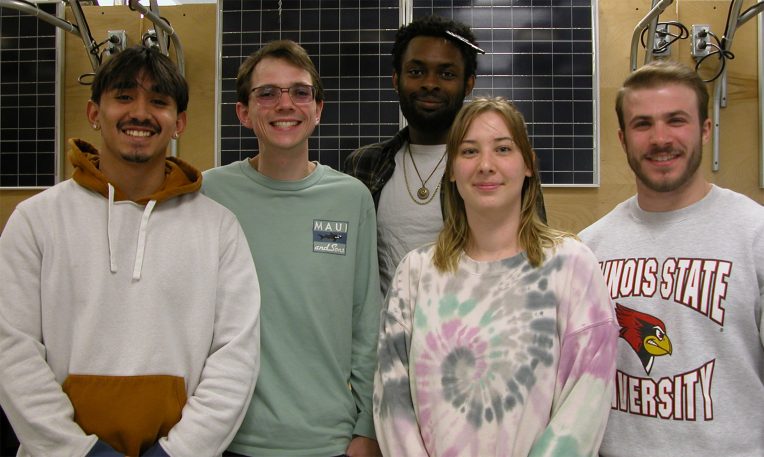Illinois State University’s Solar District Cup Team finished second place in their division at the 2022-2023 Solar District Collegiate Design Competition.
The Solar District Cup, now in its fourth year, challenges multidisciplinary student teams to develop solar-plus-storage systems to supply mixed-use districts, or groups of buildings served by a common electrical distribution feeder. The competition engages students across engineering, finance, urban planning, energy technology, sustainability, and other disciplines to reimagine how energy is generated, managed, and used in a real-world district.
Illinois State’s Solar District Cup Team finished second in the North Carolina State University District Use Case Division. The team members, Gabriel Anderson, Daniel Gibson, Cheron Elms, Gabrielle Hershey, and David Bilger, are all students from the sustainable and renewable energy undergraduate major in the Department of Technology at Illinois State. The team previously placed third in this category in 2021 and 2022.

For this competition, collegiate teams were challenged to design, model, analyze, and present a distribution-scale solar-plus-storage proposal for one of five district-use cases. The plan by Illinois State’s team included 14 solar installations on the campus of North Carolina State University. The proposed solar systems included seven roof-mounted systems on campus buildings, three ground-mounted systems, three parking structure canopy systems and one floating “floatovoltaic” system on a campus lake.
At the April 30 competition event, 27 competing teams presented their concepts to a panel of industry judges. Student proposals were evaluated based on their potential to maximize the district’s energy offset and financial savings over the life of the system while integrating aesthetic, infrastructure, and community considerations.
The competition is designed to inspire students to consider new career opportunities, learn industry-relevant skills, engage with the professional marketplace, and prepare to lead the next generation of distributed solar energy.
As Geraldine Richmond, undersecretary for science and innovation at the U.S. Department of Energy, said in remarks to the student competitors, “You now have hands-on experience with the grid issues and solutions you can expect to see in a career in this dynamic field. I hope the experience you’ve gained helps you envision ways you can contribute to a sustainable energy future. The solutions you’ve proposed show the kind of talent and knowledge necessary to help bring about the clean energy transition.”

